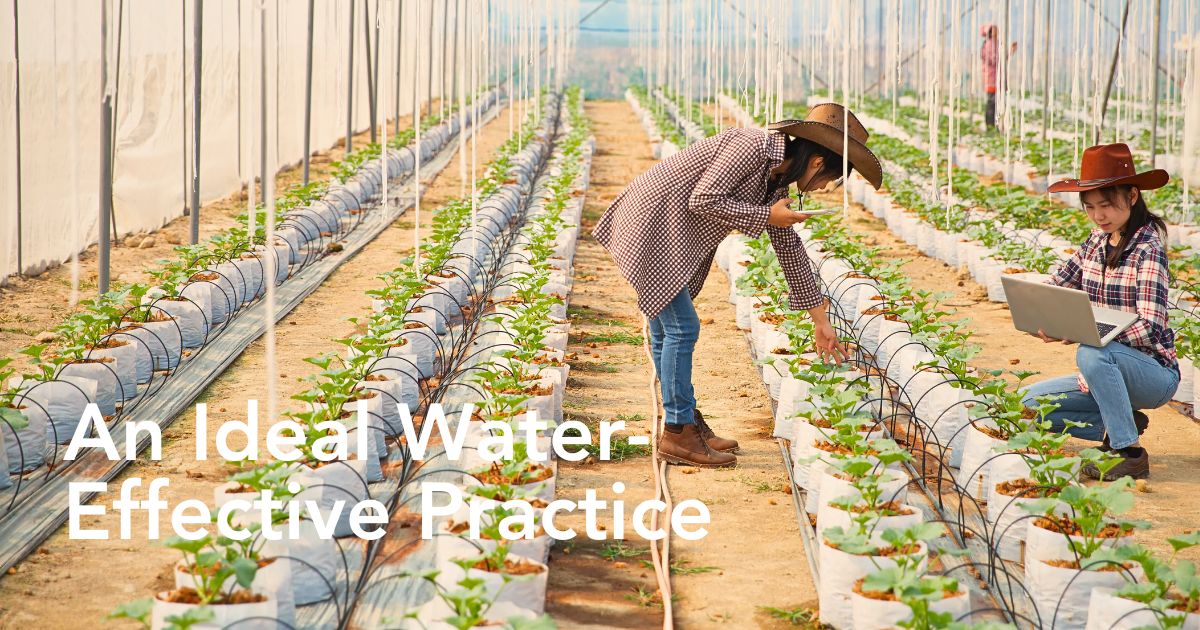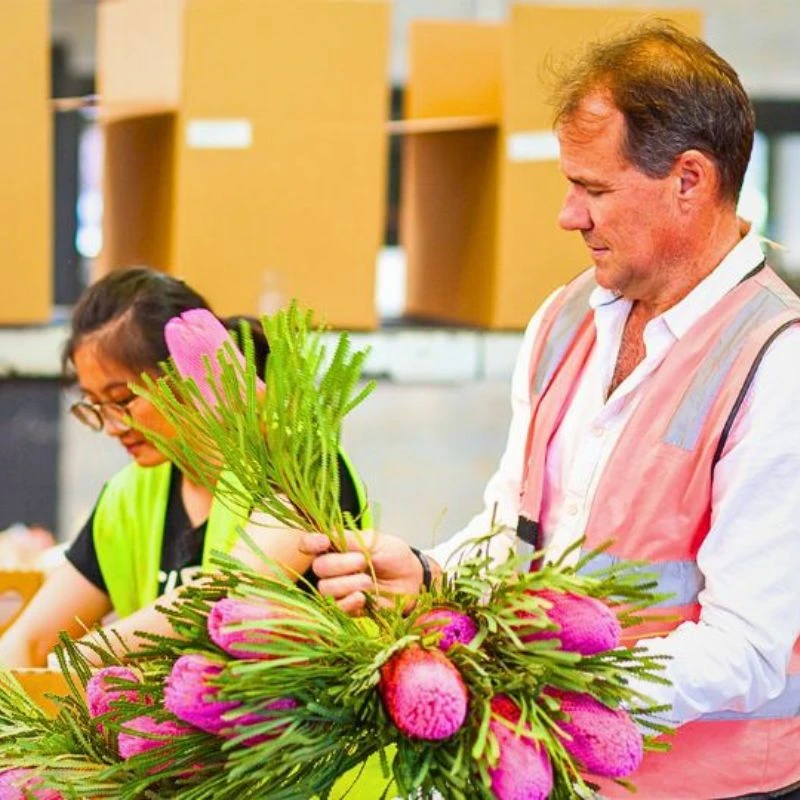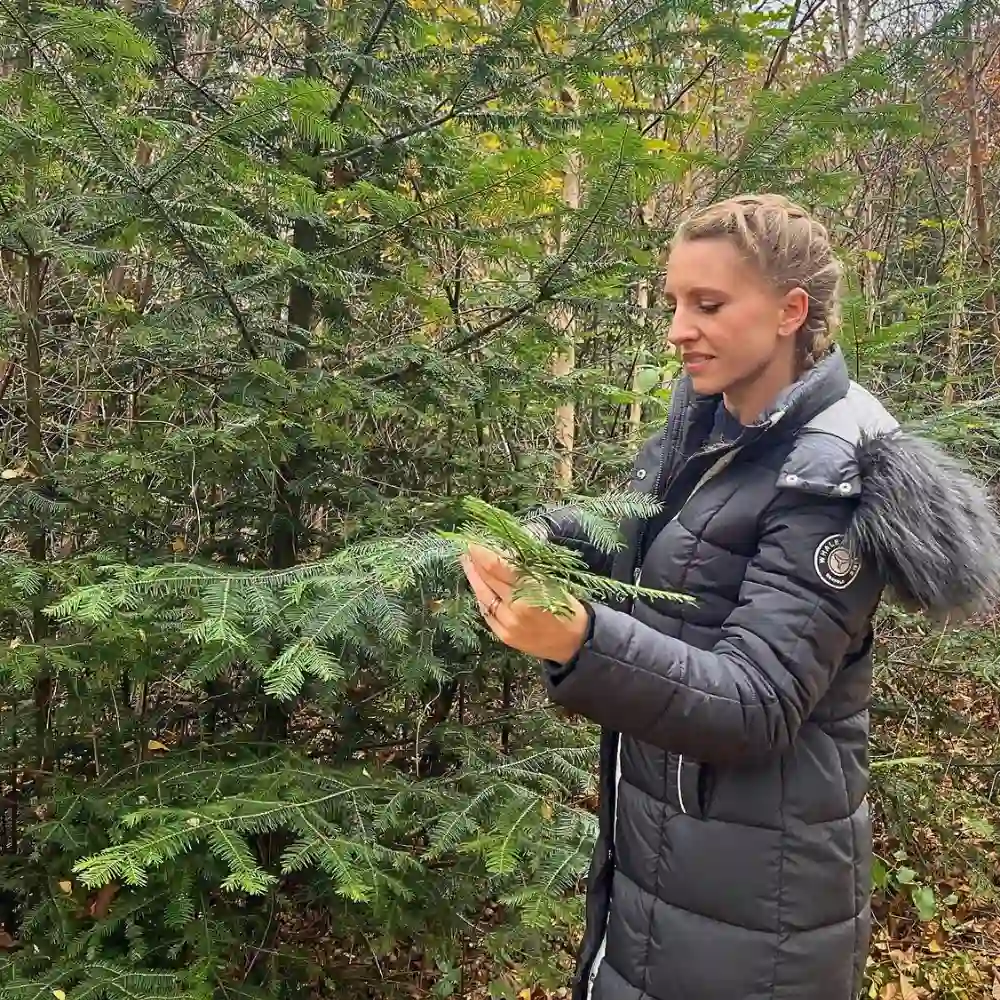The sustainability of the floriculture industry, to a significant extent, lies in how quickly the sector cuts its thirst for water. A single rose, specifically a cut rose stem, typically requires between 7 to 13 liters of water. This water footprint is further broken down into green (rainfall/soil moisture), blue (surface/groundwater), and grey (water needed to dilute pollutants) components. This is quite a significant amount if all water footprints are tallied. Around Kenya's Lake Naivasha, the country’s leading flower-producing region, studies have shown that cut flowers already account for approximately 41% of the basin's total water footprint, which is quite a substantial portion and highlights the considerable water demand of the cut-flower industry in that region.
Studies elsewhere across the world also show that aquifers in major farming zones are being drained faster than they recharge. Since irrigation typically represents the largest on-farm demand, choosing the right delivery method determines whether flower farms also become part of the depletion problem or the conservation solution. Drip irrigation—sometimes called trickle or micro-irrigation—is, perhaps, the safest bet when it comes to this. It offers up to 90-95% water-use efficiency, contrasted with 30-70% for flood or furrow systems. Its adoption is, therefore, no longer optional, but perhaps the single most water-effective practice that flower growers can implement to meet environmental, social, and economic sustainability goals.
Drip Irrigation in a Nutshell, and How It Works
Drip irrigation is a highly efficient, low-pressure watering system that delivers water directly to the root zone of plants through a network of pipes, tubing, and emitters. Water flows slowly and precisely drop-by-drop, minimizing evaporation, runoff, and deep percolation losses. Its key components include a water source, pump, filters to prevent clogging, pressure regulators, main and sub-main lines, lateral tubes, and emitters that control water discharge.
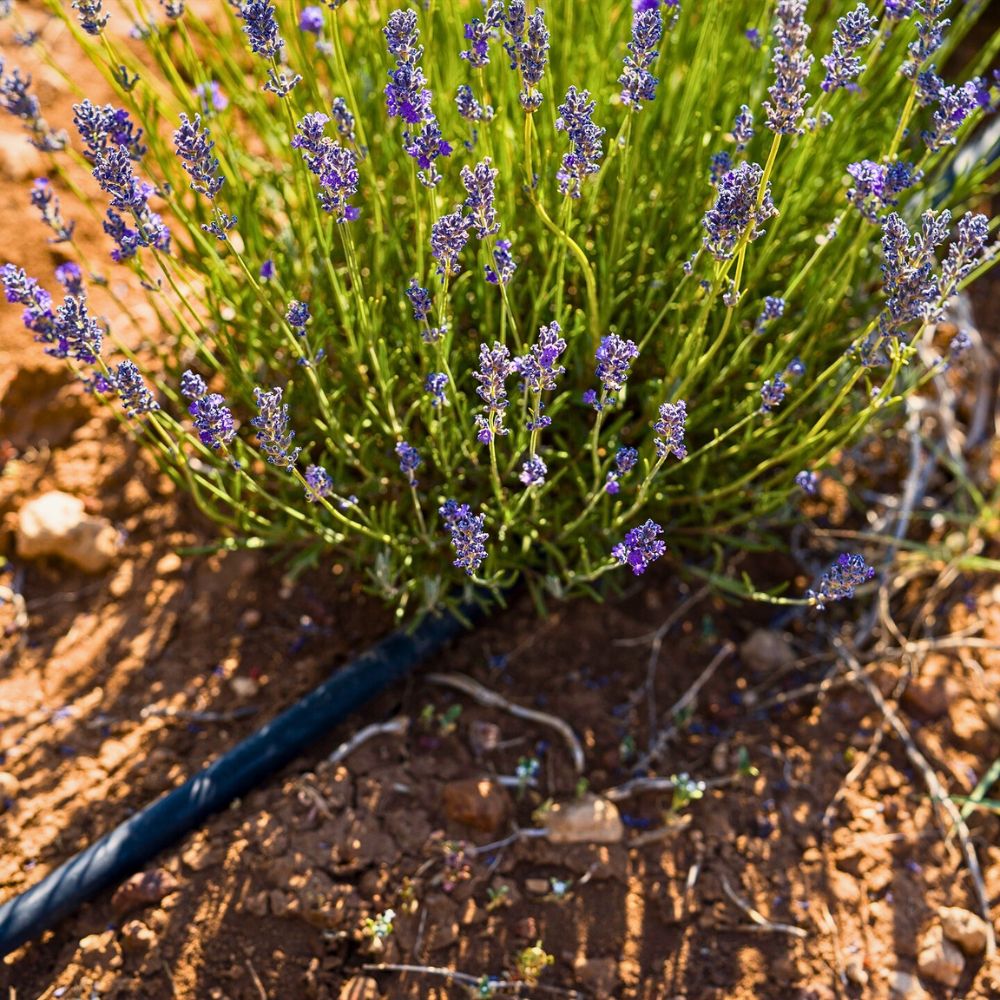
During its application, since leaves and walkways stay dry, losses to evaporation, wind drift, and runoff are minimal. The water flow rates, scheduling, and fertigation can all be computer-controlled, allowing precise tailoring to each crop's stage or greenhouse micro-climate. This targeted delivery ensures optimal soil moisture, improving plant productivity and quality while conserving water. This irrigation model effectively enhances efficiency while reducing environmental impact, therefore offering numerous benefits.
Water Conservation and Aquifer Relief
Modern drip systems achieve near-perfect efficiency, with contemporary drip tape and subsurface lines delivering up to 95% of pumped water to roots, dwarfing the 55-70% efficiency of furrows and the 30-40% typical of basin flooding. Field trials consistently demonstrate that drip systems can cut total irrigation volumes 40-60% in ornamentals while maintaining or improving yield. Because it wets only a narrow soil strip, drip reduces the grey-water footprint tied to fertilizer leachate by as much as 50%, minimizing runoff and leaching compared to traditional flooding methods.
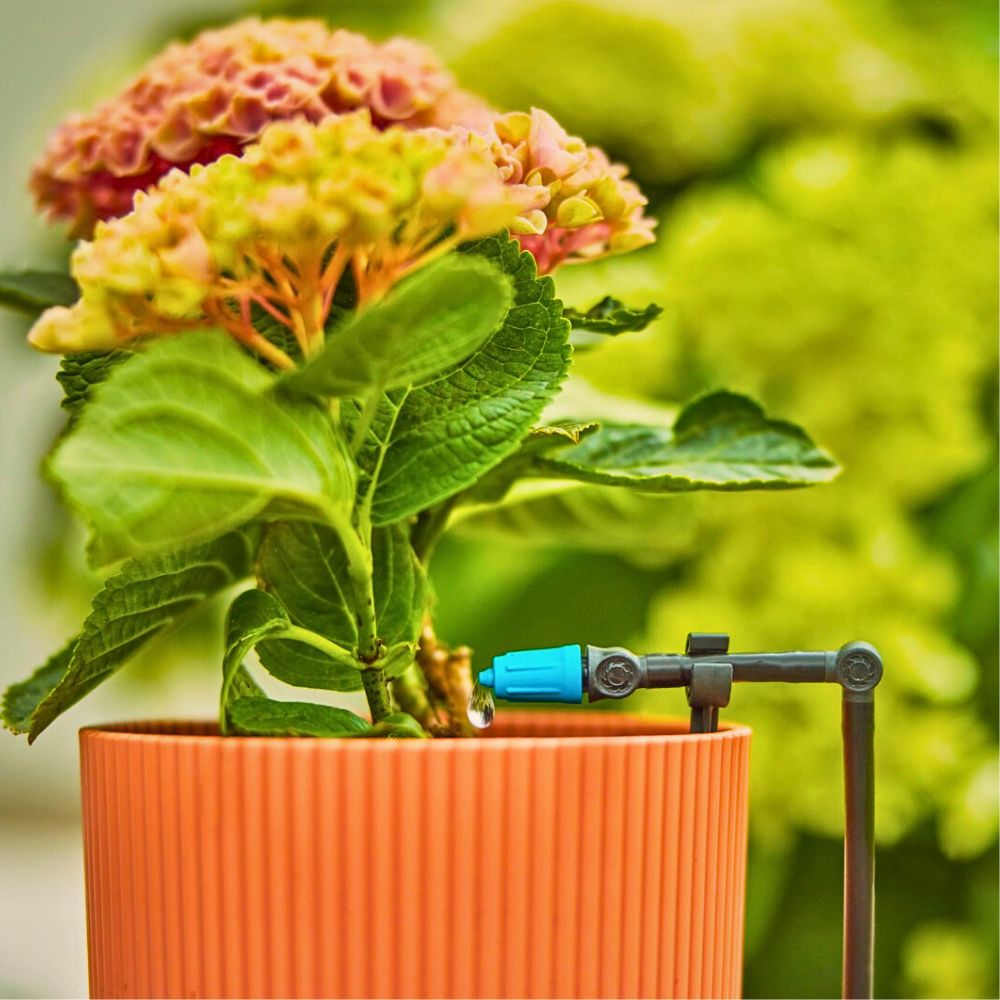
In some water-stressed flower hubs, such as in parts of Ethiopia and Kenya, as well as Ecuador, Colombia, and India—where many export flower farms cluster—this water-saving mechanism eases competition with other crops’ farming practices, community use, and ecosystems, helping growers pre-empt tightening regulations and social license concerns.
Yield, Quality, and Uniformity Gains
Precision moisture translates into measurable production benefits across a range of cut-flower crops. Roses grown with drip irrigation in high-density greenhouse blocks tend to show qualities like larger head sizes, longer stems, and virtually eliminated surface-runoff losses. Carnations demonstrate remarkable responsiveness to precise water management as well, with a pan-evaporation scheduling study finding the highest stem yield of 89 stems per square meter when drip applied daily water at a 1.0 crop-pan coefficient, while yields fell by up to 55% under three-day flood intervals.
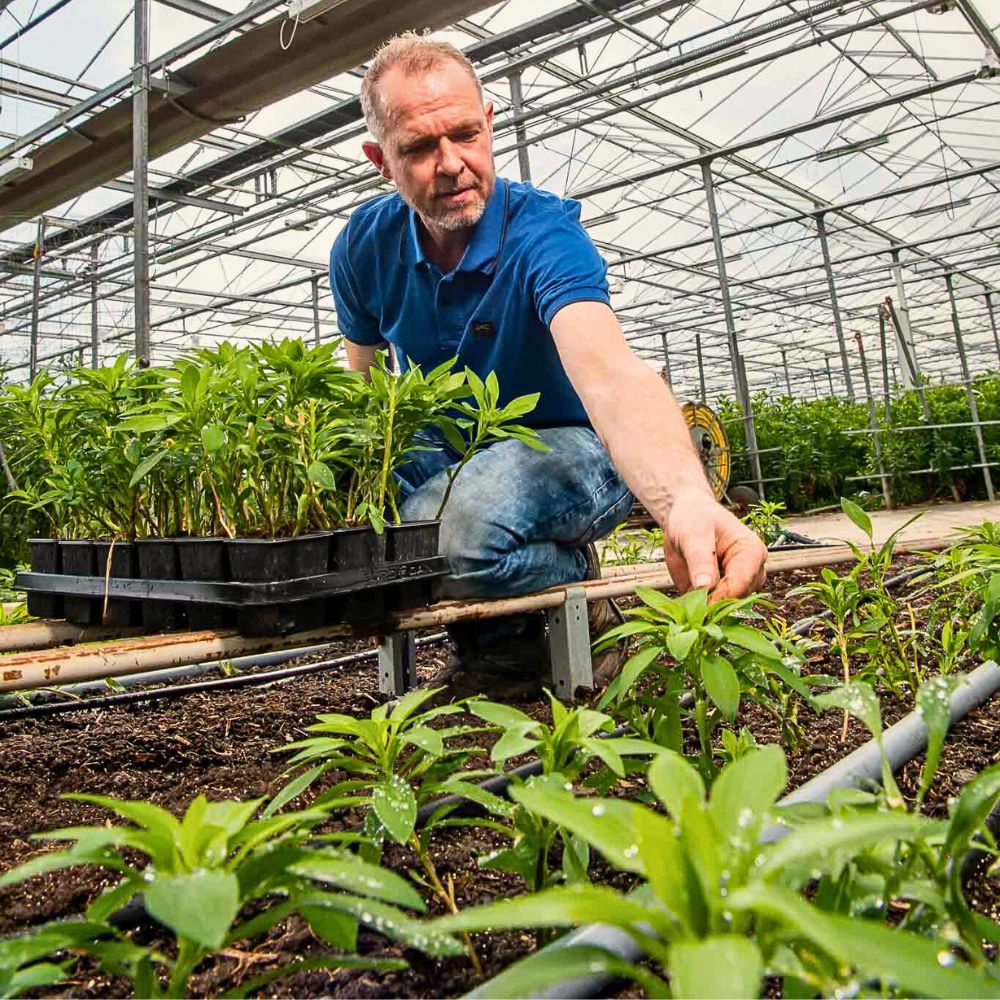
Chrysanthemums also perform exceptionally well under drip irrigation at 0.6 Epan—evaporation rate measured by an evaporation pan (Epan)—delivering the best water-use efficiency of 111 kg per hectare per millimeter, and superior flower count relative to furrow controls. Alstroemeria production, on the other hand, also reaches optimal levels when precisely drip-irrigated, producing some of the tallest plants, widest inflorescences, and more cut stems per plant, significantly outperforming other systems, like sprinkler irrigation regimes. Moreover, uniform soil moisture also evens nutrient uptake, producing consistent stem caliber—an attribute wholesalers reward with premium prices.
Disease and Pest Suppression
Keeping foliage dry removes the microclimate that many fungal pathogens require. Flower farms switching from overheads to drip have documented significant drops in conditions like botrytis and powdery mildew pressure, along with significant reductions in fungicide sprays. Lower humidity near flowers also deters thrips and mites and allows safer entry for harvest crews soon after irrigation, reducing labor bottlenecks.
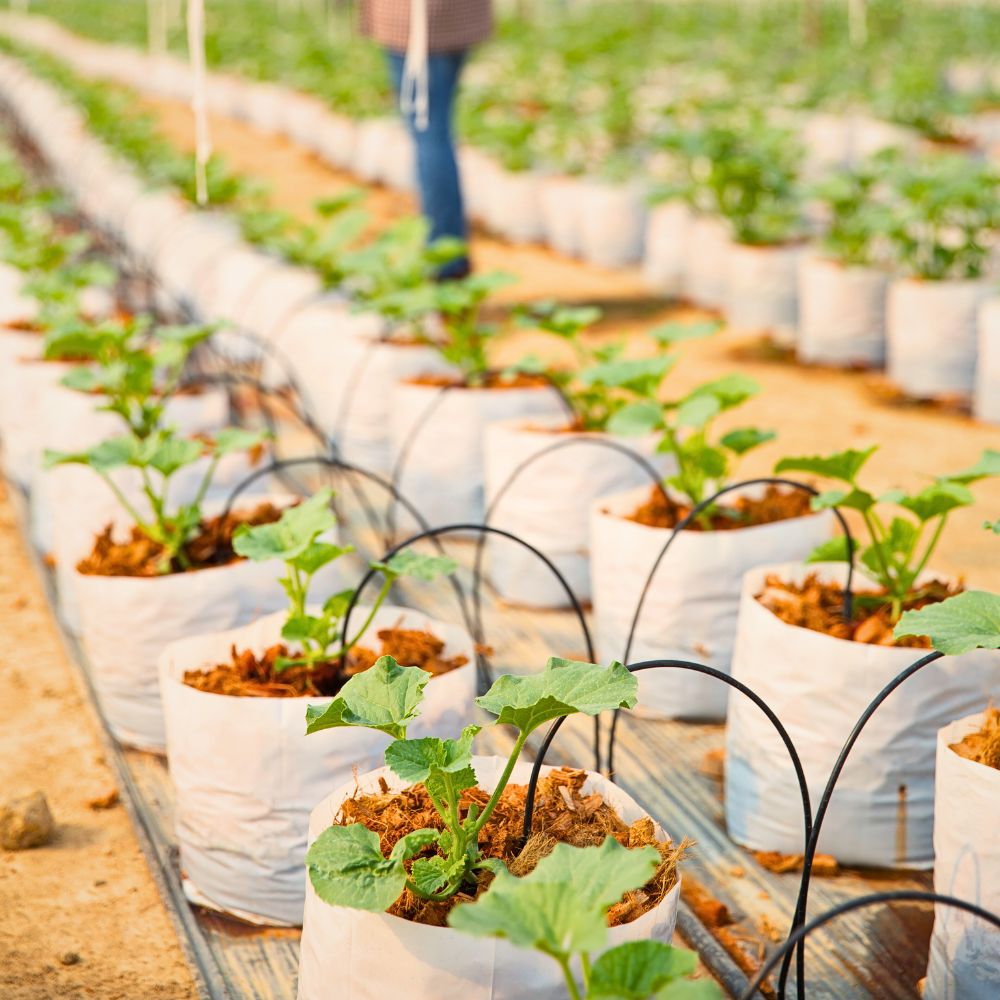
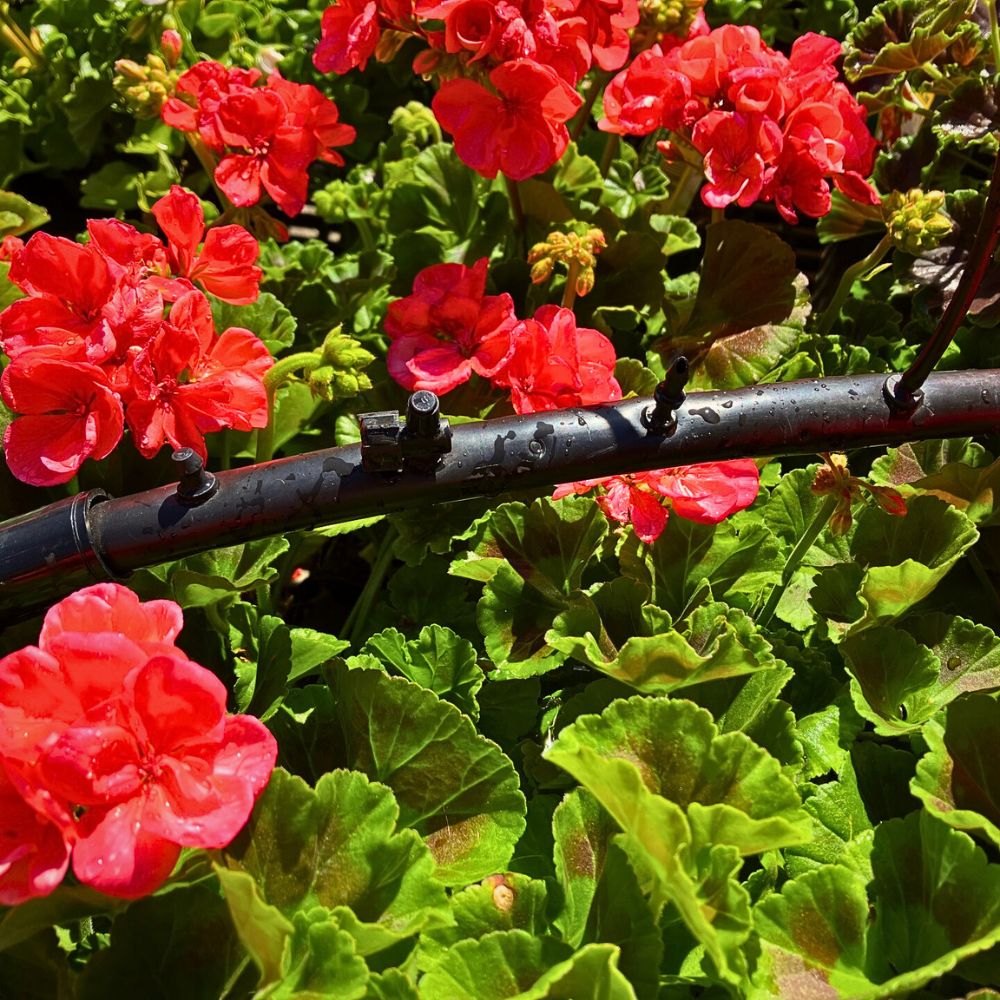
Fertilizer Efficiency and Runoff Control
Drip irrigation’s compatibility with fertigation lets growers deliver dissolved nutrients in small, frequent doses exactly where roots can absorb them. Research with carnations showed that applying 120% of the recommended NPK through fertigation more than doubled flower numbers per square meter while raising the benefit-to-cost ratio. Because nutrients stay in the root zone, losses to leaching drop sharply, cutting input costs and downstream pollution.
Climate and Energy Advantages
Even where water is plentiful, drip pays climate dividends. A University of California study in desert forage crops recorded 59% lower CO₂ and 38% lower N₂O emissions per ton of yield under subsurface drip versus furrow irrigation, largely because less and efficient energy was needed to pump and because nitrous-oxide-generating denitrification declined in drier soils.
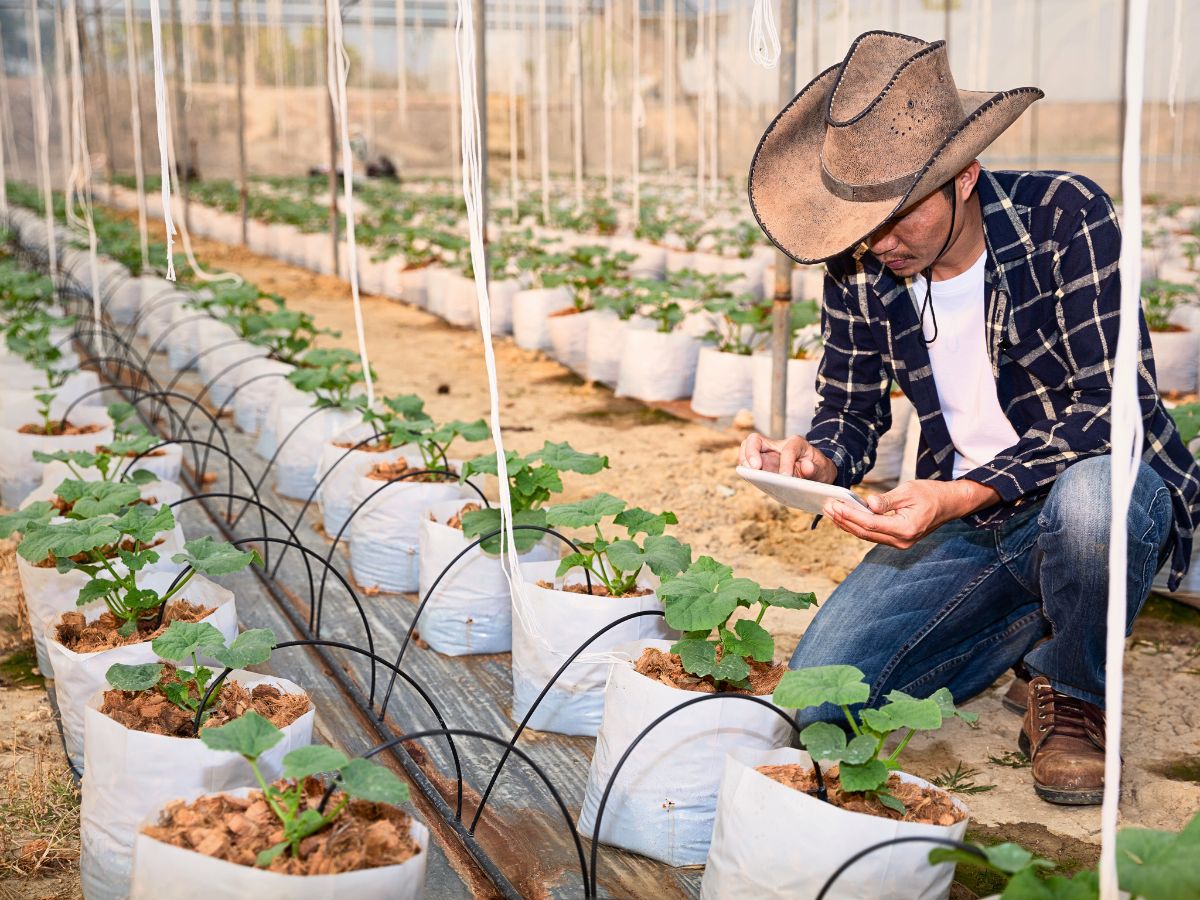
Life-cycle analyses in row crops mirror the trend, with drip-irrigated corn emitting 53% less CO₂-equivalent than flood-irrigated corn while using 24% less fertilizer. For flower farms reliant on diesel pumps or grid electricity, every cubic meter saved also trims their carbon footprint and improves ESG scores sought by eco-conscious retailers.
Labor, Cost, and Market Competitiveness
Installing a drip network demands capital, but returns arrive quickly through multiple channels. Studies in banana and grape drip systems show 70% reductions in irrigation labor, with similar savings occurring in flower blocks where valve automation replaces rostered shift watering. Energy savings also prove substantial as lower flow rates mean smaller pumps and shorter run times, often cutting electricity bills by a third or more.
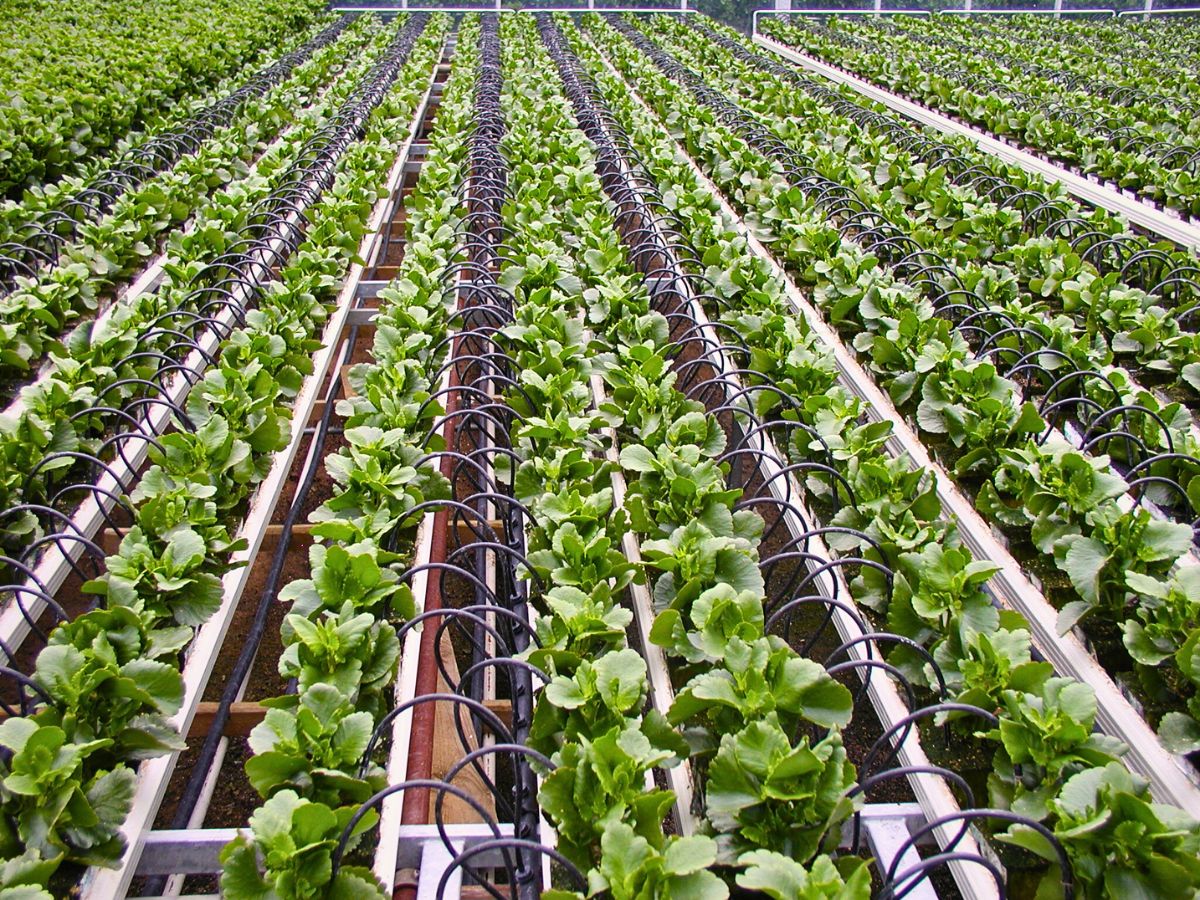
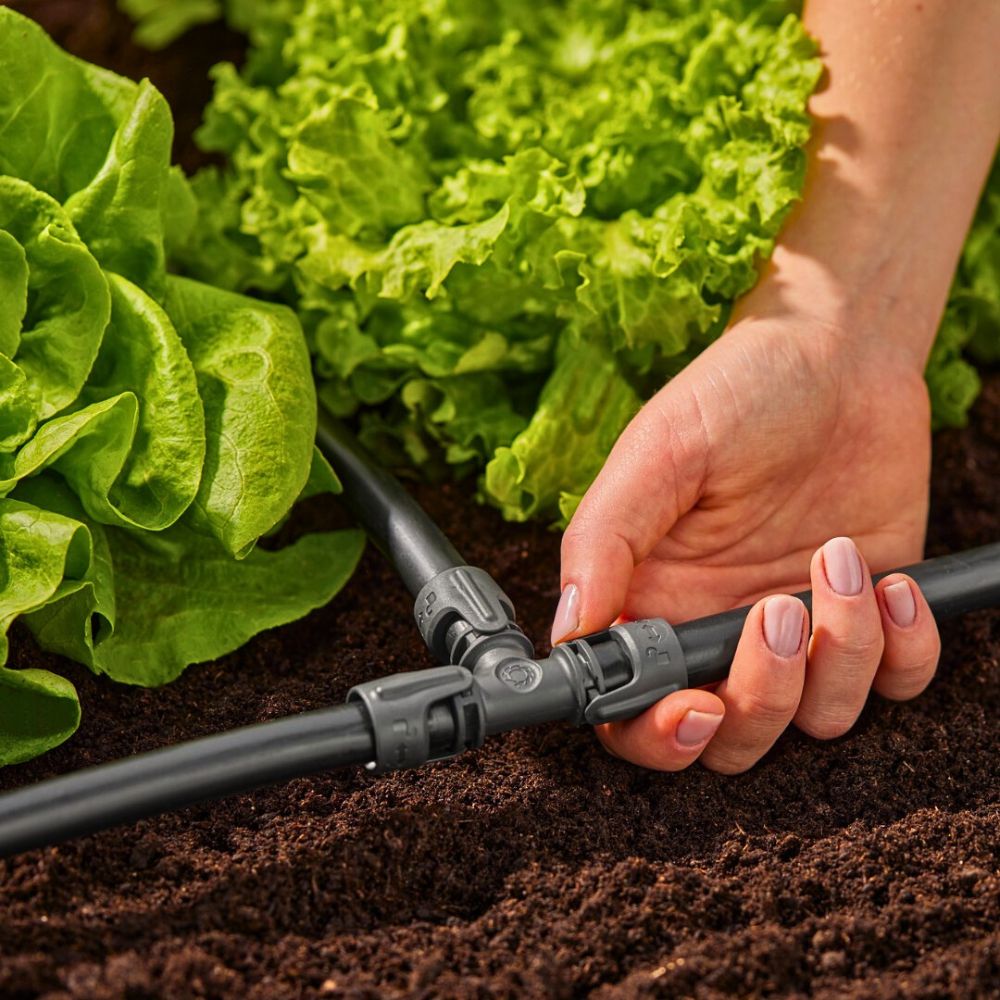
Even still, better hydration extends vase life, reducing shrinkage at wholesale and retail. Research links each 2°C rise during transport to a 50% shelf-life loss, while drip-cooled flowers enter the chain already optimally hydrated, reducing temperature sensitivity. Also, retailers increasingly flag water management on bouquets, making ‘drip-grown certification’ an ideal approach to higher-margin markets, nearly as much as Fairtrade and carbon-neutral labels have accomplished.
Drip Implementation Models for Growers
Greenhouse retrofitting offers immediate opportunities for drip irrigation application as existing perimeter or center-riser micro-sprinklers can often be replaced with in-bed drip lines for lesser costs per square meter. And the returns often come in roughly a season or two, from water and chemical savings. Open-field applications also benefit from biodegradable drip lines laid underneath mulch films for annuals like sunflowers and marigolds, simplifying retrieval while reducing plastic waste.
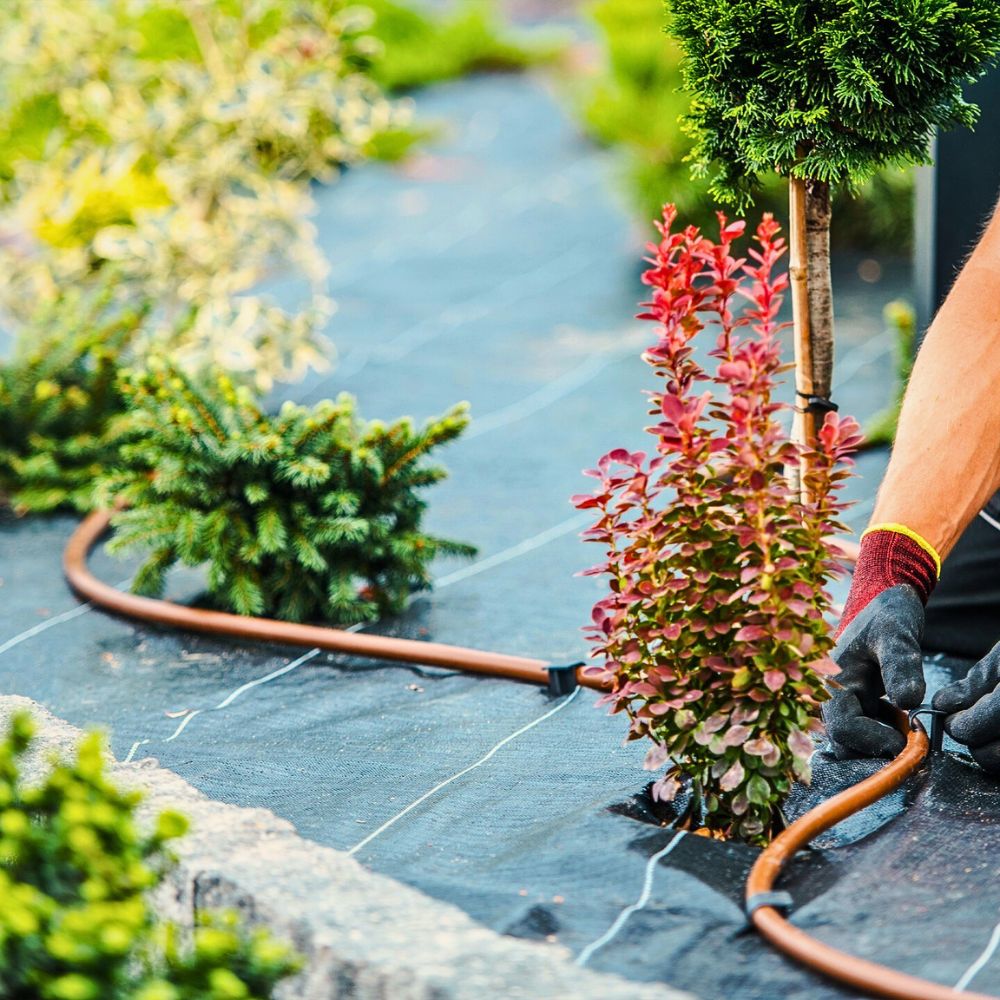
Moreover, sensor-driven scheduling pairs tensiometers or capacitance probes with automated valves to eliminate guesswork, ensuring irrigation only when the Soil matric potential (SMP) warrants intervention. Additionally, rainwater and recycled sources marry well with drip systems because lower volumes need treatment, turning waste streams into a reliable, low-cost supply through on-farm reservoirs or closed-loop capture systems.
A Strategic Case for Industry-Wide Adoption
With global agriculture already using 70% of freshwater withdrawals, and climate change heightening competition for each liter, floriculture cannot remain a high-profile water consumer. Administrations and certification bodies are, therefore, moving decisively in this respect. The Floriculture Sustainability Initiative (FSI), for instance, has water-efficiency metrics, implemented through its programs like Florverde Sustainable Flowers and MPS. In some cases, local administrations caution that growers who do not apply water-efficiency metrics risk export barriers, scarcity-driven water tariffs, or reputational damage among green-minded buyers.
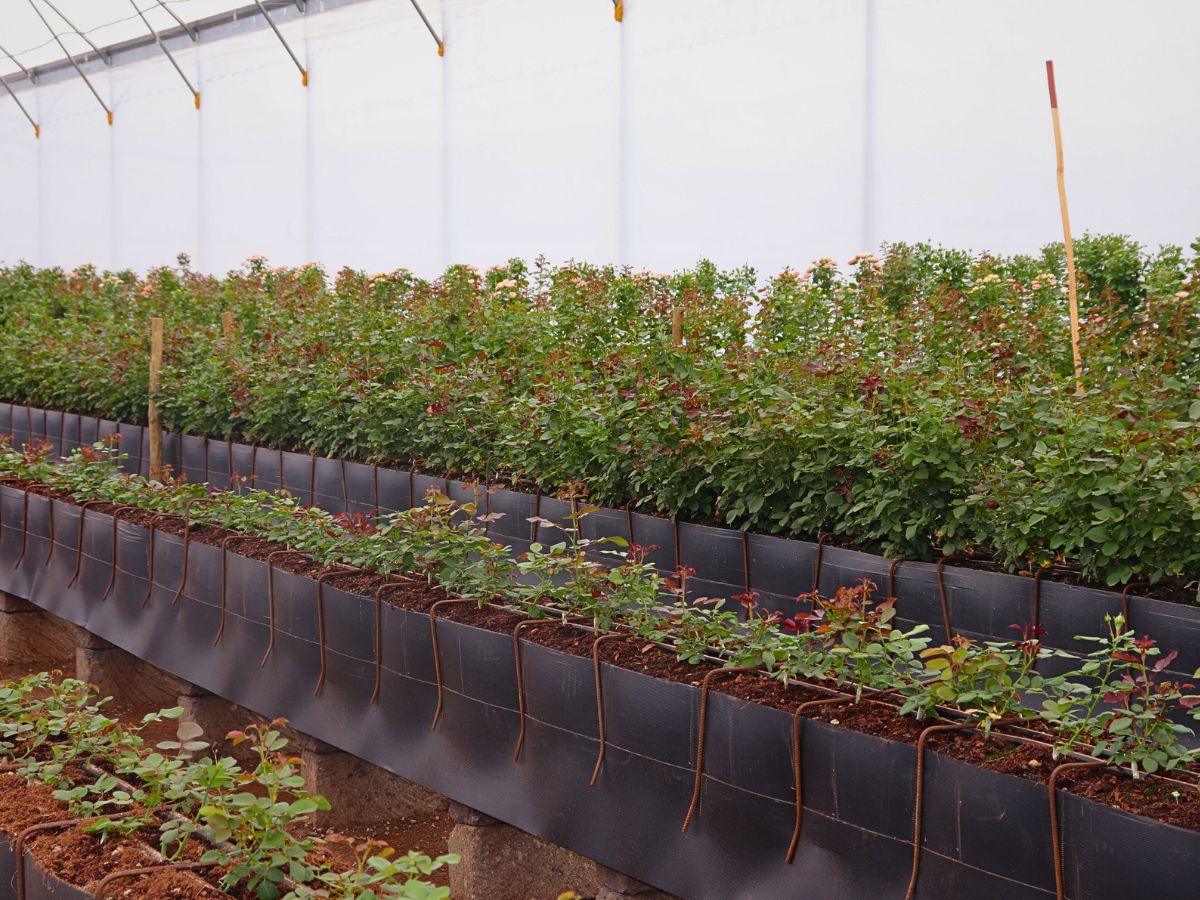
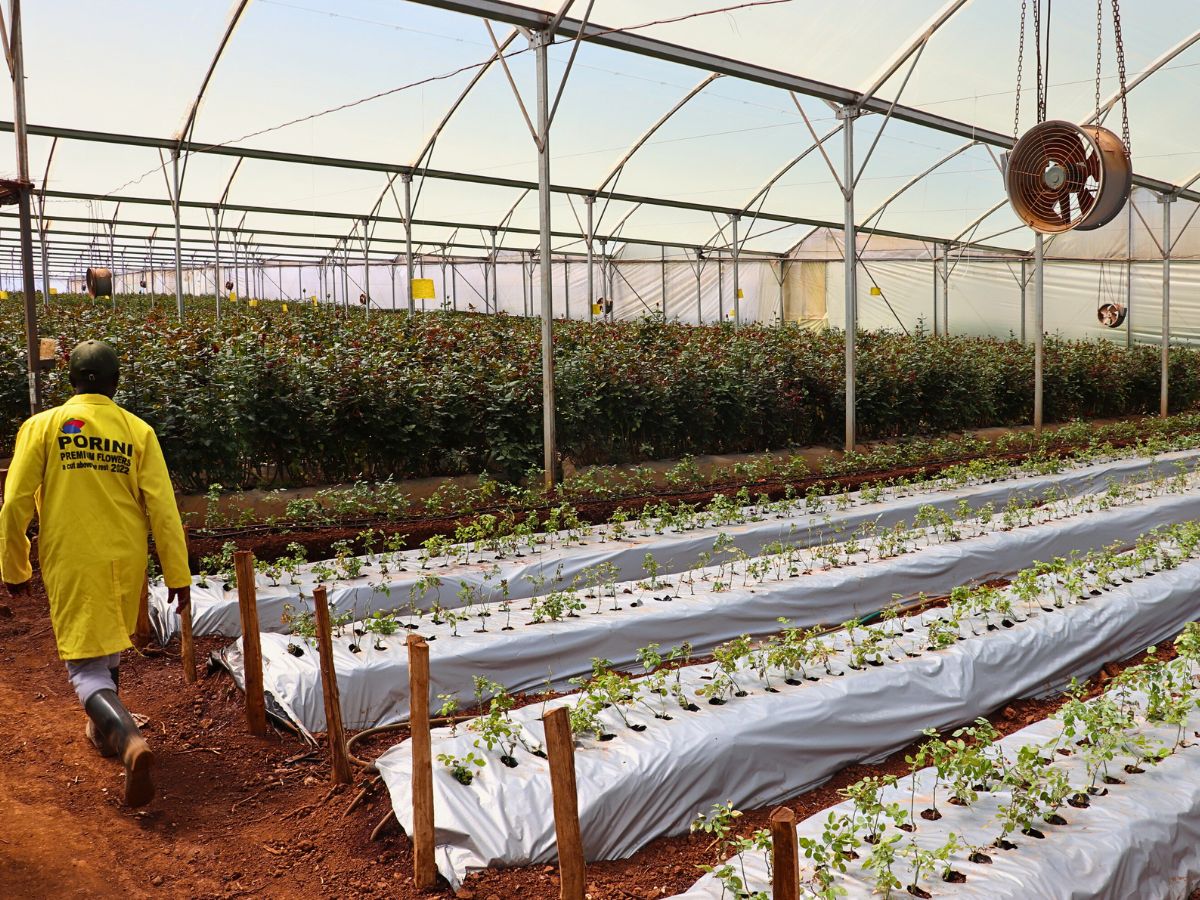
Conversely, early adopters of water-efficient approaches like drip irrigation position themselves as sustainability frontrunners; therefore, they lock in long-term resource security and realize tangible cost, yield, and quality gains. For this irrigation model, the evidence from different varieties—roses to Alstroemeria, and many others—is quite unequivocal: drip irrigation delivers more with less water, fertilizer, disease pressure, and carbon emissions.
Thus, for a sector built on beauty, taking up a technology that protects the very ecosystems inspiring its products is not just a smart move; it is an ethical obligation that guarantees the industry's sustainability while meeting the growing demands of environmentally conscious customers and consumers.
Feature image and header image by jcomp.

